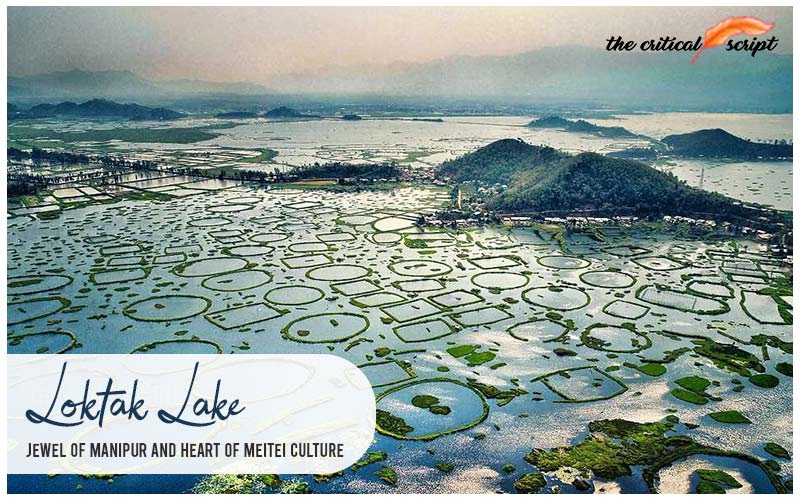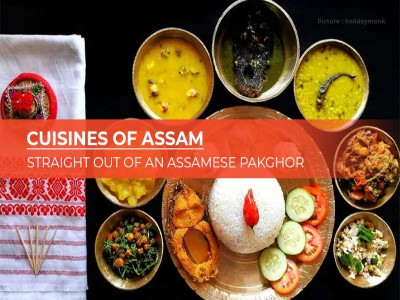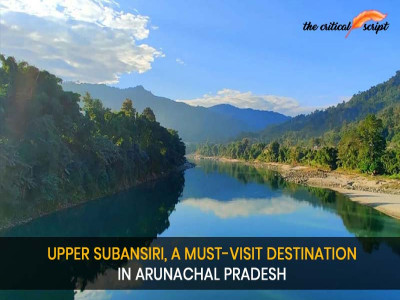
Loktak: Jewel of Manipur and Heart of Meitei Culture
Nestled in the Northeastern state of Manipur,
Loktak Lake is one of India's most captivating and ecologically significant
bodies of water. Often referred to as the "Jewel of Manipur," Loktak
is renowned for its unique floating islands, rich biodiversity, and profound
cultural significance to the Meitei people and other local communities.
It isthe largest freshwater lake in Northeastern
India, spans approximately 287 square kilometers. Its most distinctive feature
is the presence of phumdis - heterogeneous masses of vegetation, soil, and
organic matter at various stages of decomposition. These phumdis float on the
lake's surface, creating a mesmerizing and dynamic landscape. The lake is
situated at an altitude of 768.5 meters above sea level and is fed by several
rivers, with the Manipur River being the most prominent.
Loktakis a haven for
biodiversity and has been designated a Ramsar site, recognizing its
international importance as a wetland. It is home to over 230 species of
aquatic plants, 100 species of birds,over 60 different species of
fish and a variety of animals, including the endangered Sangai deer
(Rucervuseldiieldii), which is endemic to the region. The Sangai, also known as
the brow-antlered deer, resides primarily on the floating phumdis in the
KeibulLamjao National Park, the world's only floating national park, located
within the lake.
The lake plays a crucial role in the
hydrological and ecological stability of the region. It acts as a natural
reservoir, regulating the flow of several rivers and providing water for
agriculture, drinking, and hydropower generation.The Loktak Hydroelectric Project, is a significant
source of power in Manipur, harnessesing the waters of Loktakto generate
electricity. The project generates approximately 450 million
kilowatt-hours (kWh) of electricity annually.
For the local
communities, particularly the Meitei people, Loktak is not just a body of water
but a source of livelihood, cultural heritage, and spiritual significance. The
lake supports a significant population of fishermen who depend on its rich
aquatic resources. Traditional fishing techniques, passed down through generations,
are still practiced here, reflecting the deep-rooted connection between the
people and the lake.Loktak is an economic
powerhouse for the region, providing essential resources and opportunities that
sustain the livelihoods of many. From fisheries and agriculture to hydropower
and tourism, the lake's diverse economic roles underscore its importance to
Manipur's prosperity.
Apart from fish, Loktak supports the production of various other resources that contribute significantly to the livelihoods of local communities and the region's economy. The lake is rich in aquatic vegetation, including phumdis, which are floating biomass used for traditional handicrafts such as mats and baskets. Phumdis also serve as floating agricultural plots for certain crops. Vegetables and edible plants like water spinach (Ipomoea aquatica) and lotus stems are harvested from the lake for local consumption and markets, forming an integral part of the local diet and cuisine.
The lake also produces water chestnuts (Singhara), which are harvested and consumed locally or sold in markets. Algae and water ferns from the lake are utilized as animal fodder and organic fertilizers for agriculture. Some local communities practice floating agriculture on the phumdis, growing crops such as mustard, ginger, and other vegetables, which provide food and additional income for the farmers.
Loktak is more than just a body of water for the Meitei people; it is a sacred space imbued with spiritual significance and divine presence. The deities IbudhouThangjing, Panthoibi, and EbudhouPakhangba, among others, are revered and worshipped through various rituals and festivals that celebrate the lake's sacredness. These traditions not only preserve the cultural heritage of the Meitei but also emphasize the importance of conserving Loktakfor future generations.
Despite its ecological and cultural
significance, Loktakfaces several challenges. Pollution, encroachment, and the
construction of dams and reservoirs have adversely affected its health. The
proliferation of phumdis, while natural, has also been exacerbated by human
activities, disrupting the lake's ecological balance.
Conservation efforts are underway to protect
and restore Loktak. The Loktak Development Authority (LDA) has implemented
several measures to control pollution, manage phumdis, and promote sustainable
fishing practices. Community involvement is a key aspect of these efforts,
ensuring that the people who depend on the lake are active participants in its
preservation.
Loktakis a treasure trove of natural beauty,
biodiversity, and cultural heritage. Its floating phumdis and the endangered
Sangai deer are unique to this region, making it a site of immense ecological
and touristic value. For the Meitei people, the lake is not just a natural wonder
but a spiritual and cultural cornerstone. Preserving Loktakis not only crucial
for maintaining the ecological balance of Manipur but also for sustaining the
livelihoods, spiritual practices, and cultural identities of the local
communities. Through continued conservation efforts and sustainable practices,
Loktak can continue to thrive as the "Jewel of Manipur" and the heart
of Meitei culture for generations to come.
Disclaimer: The opinions expressed in this article are those of the author's. They do not purport to reflect the opinions or views of The Critical Script or its editor.

Newsletter!!!
Subscribe to our weekly Newsletter and stay tuned.

















Related Comments